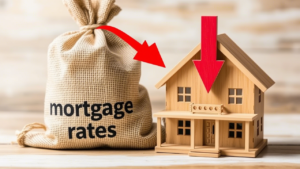As someone who has followed housing trends closely for years, I can tell you this: the forces driving affordability aren’t just mortgage rates and market demand—they’re also deeply political. A new wave of opinion data suggests that debates around immigration and tariffs are not just national issues—they’re hitting close to home, literally.
Table of Contents
ToggleImmigration and Tariff Concerns: What the Redfin Survey Says About Housing Affordability
According to a June 2025 survey from Redfin, 51.2% of U.S. homeowners and renters believe that reducing immigration would negatively impact housing affordability. Why? Because fewer immigrants could mean fewer construction workers—leading to fewer homes being built and, ultimately, higher home prices. Tariffs, especially on imported building materials, are also being viewed as contributors to rising construction costs.
My Take: What This Means for the Housing Market
1. Immigration Policy Shapes Supply Chains
The housing market isn’t just driven by buyers—it’s driven by builders. Immigrant labor forms a critical backbone of residential construction in the U.S. Curtailing immigration could shrink this workforce, slowing down homebuilding at a time when we already face a massive supply shortage.
Think of it like this: fewer workers = fewer homes = higher competition among buyers = skyrocketing prices.
2. Tariffs Can Quietly Inflate Your Housing Costs
Tariffs on materials like steel, lumber, or even appliances add hidden costs to construction. These costs are passed on to consumers—meaning that a 10% tariff on lumber can translate into thousands of dollars tacked onto a new home’s price tag.
And this isn’t theoretical—it’s already happened. When tariffs were imposed on Canadian lumber in the past, new home prices saw up to $9,000 increases per unit.
3. Public Perception Could Influence Policy
What struck me most in the Redfin survey was the divide in public opinion. If more than half of Americans link immigration to housing affordability, that could put pressure on policymakers. And in an election cycle, this sentiment could steer real policy changes—making it a real consideration for investors and developers alike.
4. Housing Affordability Is More Political Than Ever
This conversation goes beyond economics—it’s cultural and political. But regardless of where one stands ideologically, the data-driven reality is this: labor and material costs directly affect how affordable homes are to build—and to buy.
What Should Buyers, Sellers, and Investors Do Now?
Buyers:
- Be aware of upcoming policy shifts—especially immigration and trade policies—as they could impact home prices and availability.
- If you’re considering new construction, lock in sooner rather than later before potential supply constraints raise costs further.
Sellers:
- If you own a newer home, your property could become more valuable if new builds slow down due to labor shortages or tariffs.
- Emphasize build quality and energy-efficient materials in your listing—these are increasingly valuable as material costs rise.
Investors:
- Monitor policy developments related to immigration and international trade. These could create opportunities or bottlenecks in specific markets.
- Explore secondary or tertiary markets where construction may remain cost-effective due to local policy or workforce trends.
What Is Housing Affordability and Why Does It Matter?
Housing affordability refers to whether people can reasonably afford to rent or buy a home based on their income. It matters because when homes cost too much, fewer people can buy, demand falls, and economic inequality worsens. Affordability is usually tracked by comparing income to home prices or rents—like the price-to-income ratio.
Looking Ahead
If you’re a market watcher like me, this is more than just a survey—it’s a signal. Policy isn’t just background noise; it’s a powerful force shaping local housing conditions. Staying informed about how political winds blow—on immigration or tariffs—could give you a leg up in planning your next move, whether that’s buying, selling, or investing.
Have questions about how policy could affect your local market?
Let’s keep the conversation going. Here are a few questions I’ve been hearing:
Could relaxing immigration rules help fix the housing shortage?
Potentially. More construction workers could accelerate homebuilding, easing the supply crunch.
Are tariffs likely to increase again soon?
It’s uncertain, but global tensions and election year posturing mean it’s a risk worth monitoring.
What’s the best way to hedge against rising construction costs?
Consider investing in existing properties with strong bones—or in markets with a healthy local workforce and lower regulatory barriers.
Final Thought:
In real estate, it’s easy to focus on local factors. But national policies—from who builds our homes to what materials cost—have a ripple effect that eventually lands on your doorstep. Stay alert, stay curious, and remember: behind every policy debate is a potential real estate shift.
